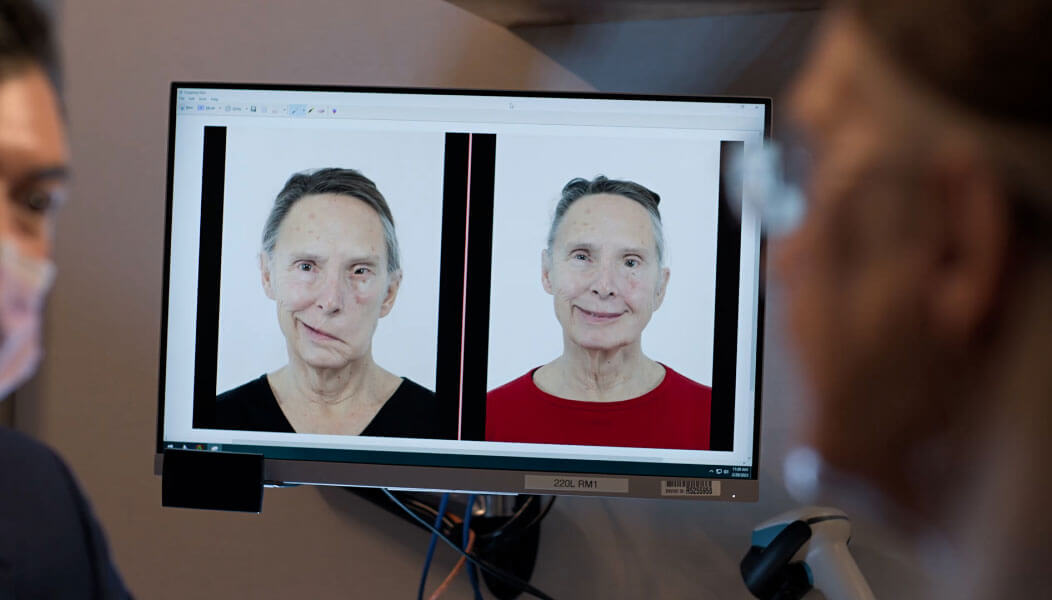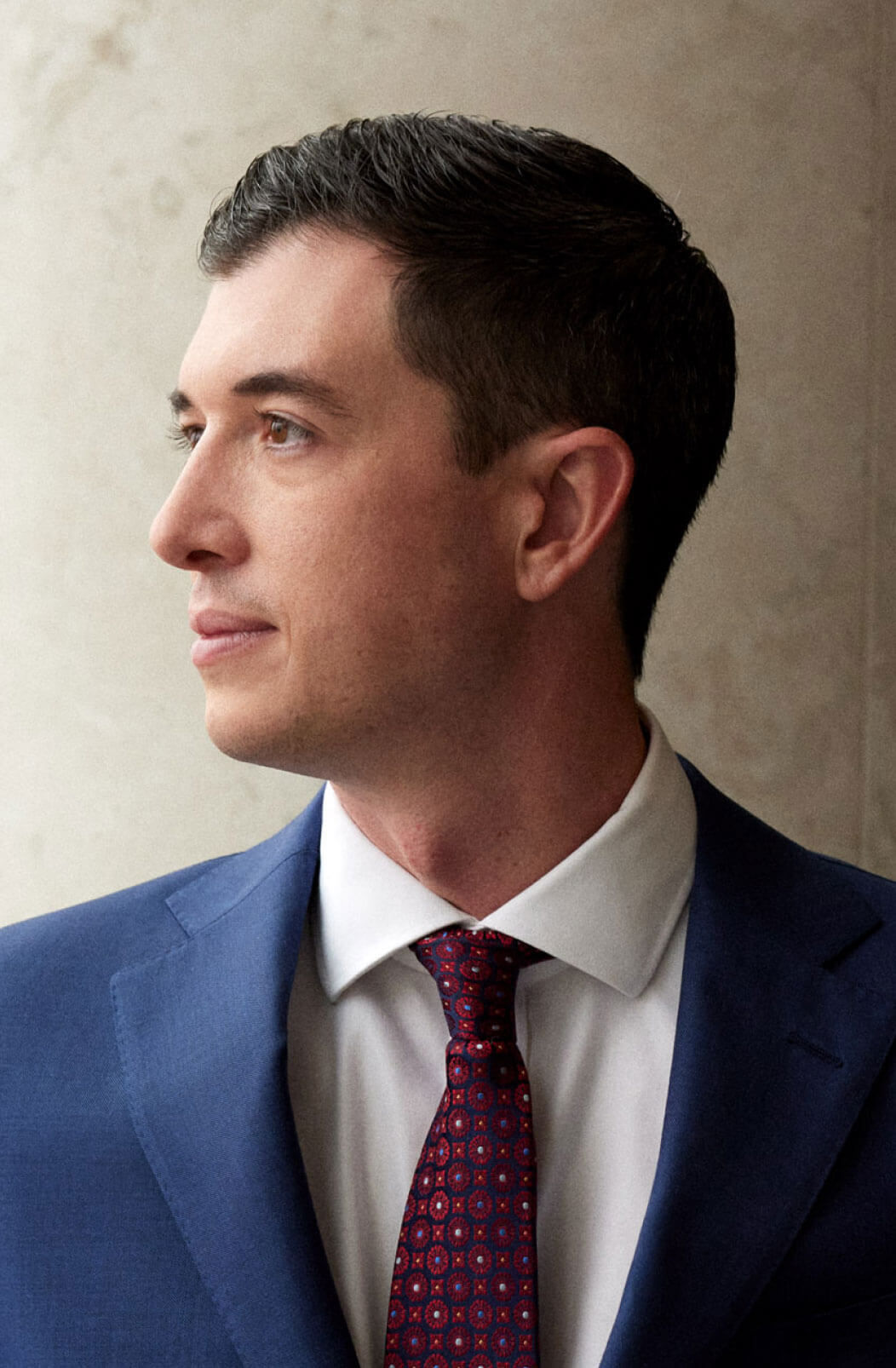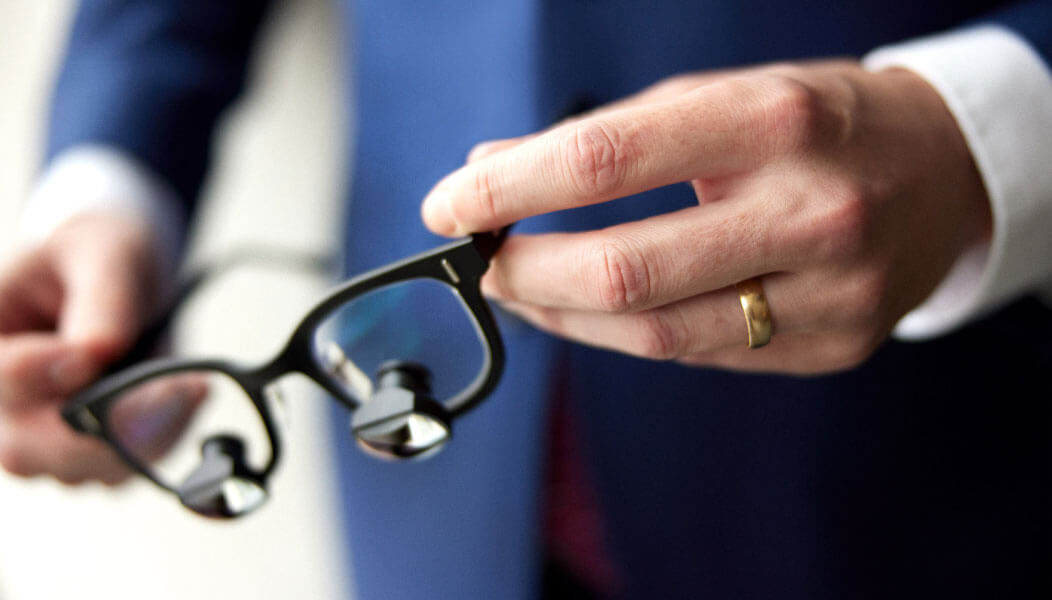As a medical student, Dr. Dey found a passion for surgery: “It’s a very privileged and intimate interaction where someone is saying ‘I am going to entrust my life and my quality of life to you,’” he says. “I was fortunate to have phenomenal mentors that sparked my interest in facial plastic and reconstructive surgery.”
Early on, one particular experience helped shape his focus. “We had a patient who was unable to smile. And I could see how profoundly it affected her,” he says. “I was lucky to be part of the team that helped reanimate her face. To this day, I can remember seeing her after surgery and watching her smile for the first time in years. That moment solidified my interest in facial plastic and reconstructive surgery.”


Dr. Dey describes facial reanimation as a catchall term. He equates it to a toolbox. And in that toolbox, many procedures and surgeries help recreate facial symmetry and function. “Not every facial plastic surgeon has every tool available,” he says. “With my training and our team, we offer all the tools, from nonsurgical treatments like Botox and fillers, to surgical treatments like nerve and muscle transfers, to treating patients with aberrant reinnervation through select muscle and select nerve cuts.”
One of Dr. Dey’s primary focus areas is facial paralysis. “The effects of facial paralysis can be devastating,” he says. “I had a patient with a tumor of her skull base that weakened her facial nerve. The surgical team removed the tumor, and in doing that, a portion of her facial nerve had to be removed, resulting in complete facial paralysis on one side of her face. In our first meeting, she told me of an encounter with a young boy at a grocery store. The little boy had walked up, and she smiled to say hello. Because of the severe asymmetry of her smile, the boy ran off crying. It made her heart sink.”

As patients sit with me in clinic, they are often crying. And I have great empathy for them. But I also get to do something extraordinary. I get to provide them with a solution—with hope.”
“I was fortunate to discuss options for facial reanimation with her,” he says. “We ended up doing muscle transplant surgery where we took muscle from her inner thigh to reconstruct or replace the muscles of her face, carefully connecting its blood supply to the neck and connecting it to a new nerve. Now she can smile with her whole face, and that is life changing.”

“It’s emotional when you can’t connect with other people; when you can’t reciprocate a smile,” he says. “As patients sit with me in clinic, they are often crying. And I have great empathy for them. But I also get to do something extraordinary. I get to provide them with a solution—with hope. Almost always, there is something we can do to help someone with facial paralysis. Once the procedure is complete, there are often more tears. But at this point, they are tears of joy. That’s what drives me to keep doing what I’m doing, to innovate and work to push the needle forward. And each day say, what can we do today to make things a little bit better as we continue to help patients?”
What does Dr. Dey see for the future of facial reanimation? “It’s a hotbed for innovation, which is professionally exciting but also incredibly moving to offer these new treatments to patients,” he says. “Each year, we better understand the microanatomy of the facial nerve and the pathophysiology of facial nerve injury and recovery. This informs us to design more effective treatments for facial paralysis. Personally, I want to increase awareness about treatments. It amazes me that there are still so many facial paralysis patients in the world who believe they have no other options.”
“I’m also fortunate for my advanced aesthetic training, which allows me to approach facial reanimation patients with an artistic eye,” says Dr. Dey. This combination of expertise in facial reanimation and aesthetic facial surgery helps Dr. Dey get the best possible outcomes for his patients. “Unfortunately, some people still think of aesthetic procedures as solely cosmetic. But I argue that if a patient is experiencing distress because what they see in the mirror doesn’t match how they feel on the inside, that patient is worthy of treatment. They are worthy of a change to improve their quality of life.” Dr. Dey sees a cultural shift happening around the stigma of plastic surgery. “More and more people are open about having had aesthetic facial plastic surgery. And so I think some of that stigma is going away.”
It is so gratifying to play a role in restoring someone’s quality of life. It truly is a life-changing procedure. Each day is a gift for me to work with my team and make a positive impact.”
For every smile Dr. Dey repairs through facial reanimation, his own smile keeps growing. “It is so gratifying to play a role in restoring someone’s quality of life. It truly is a life-changing procedure. Each day is a gift for me to work with my team and make a positive impact.” Because at the end of the day, Dr. Dey realizes he’s not just reanimating a face. He’s reanimating a life.